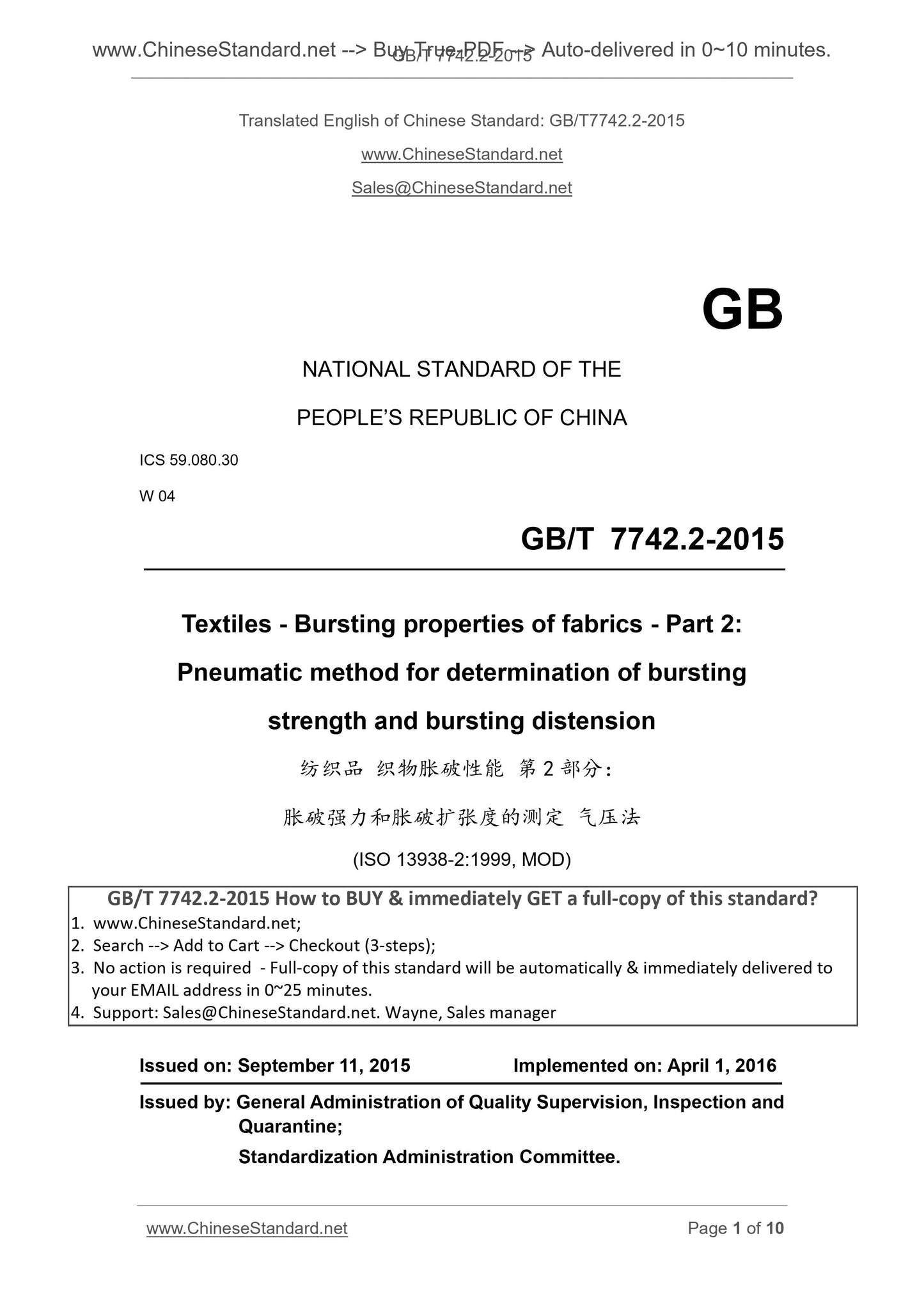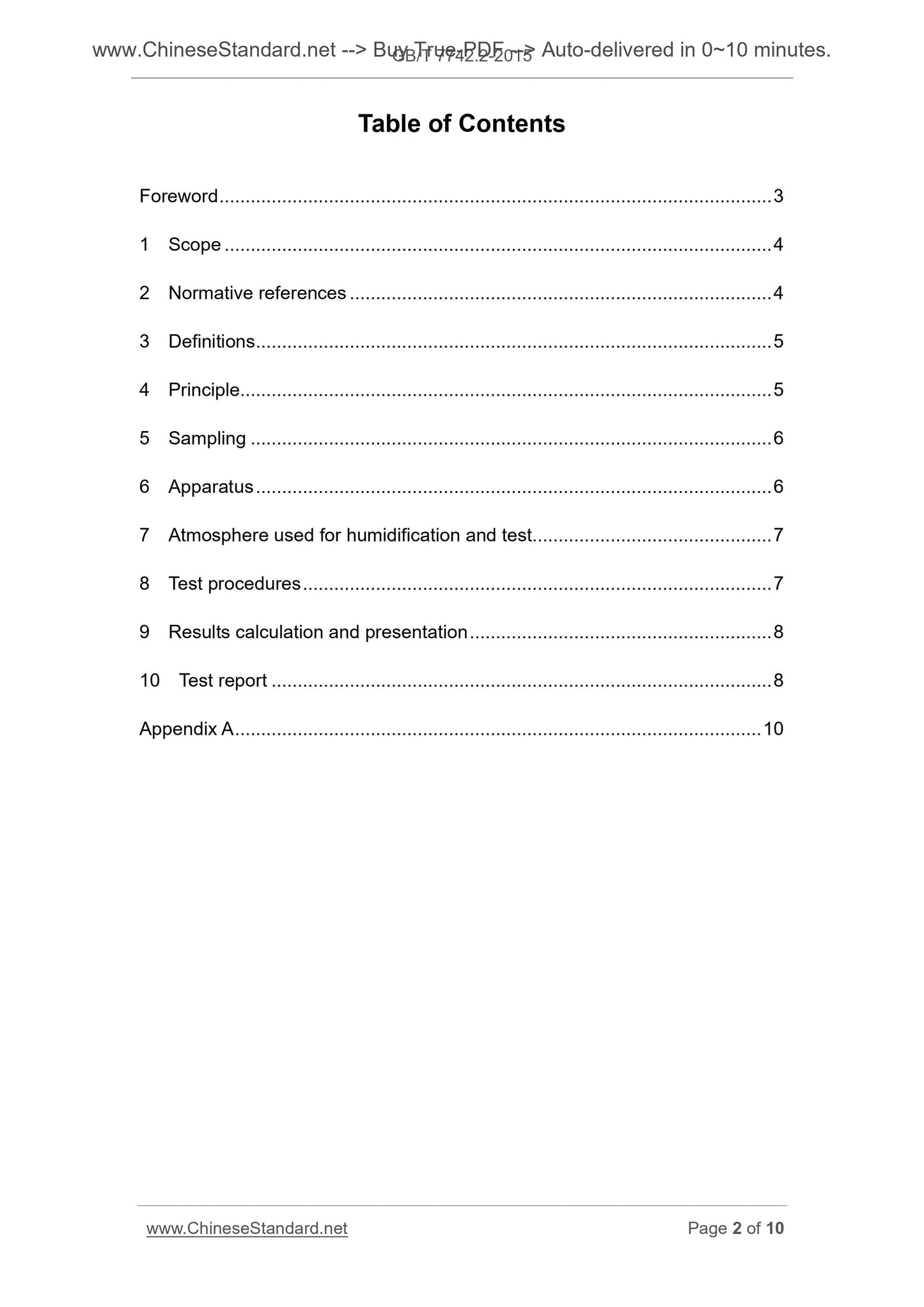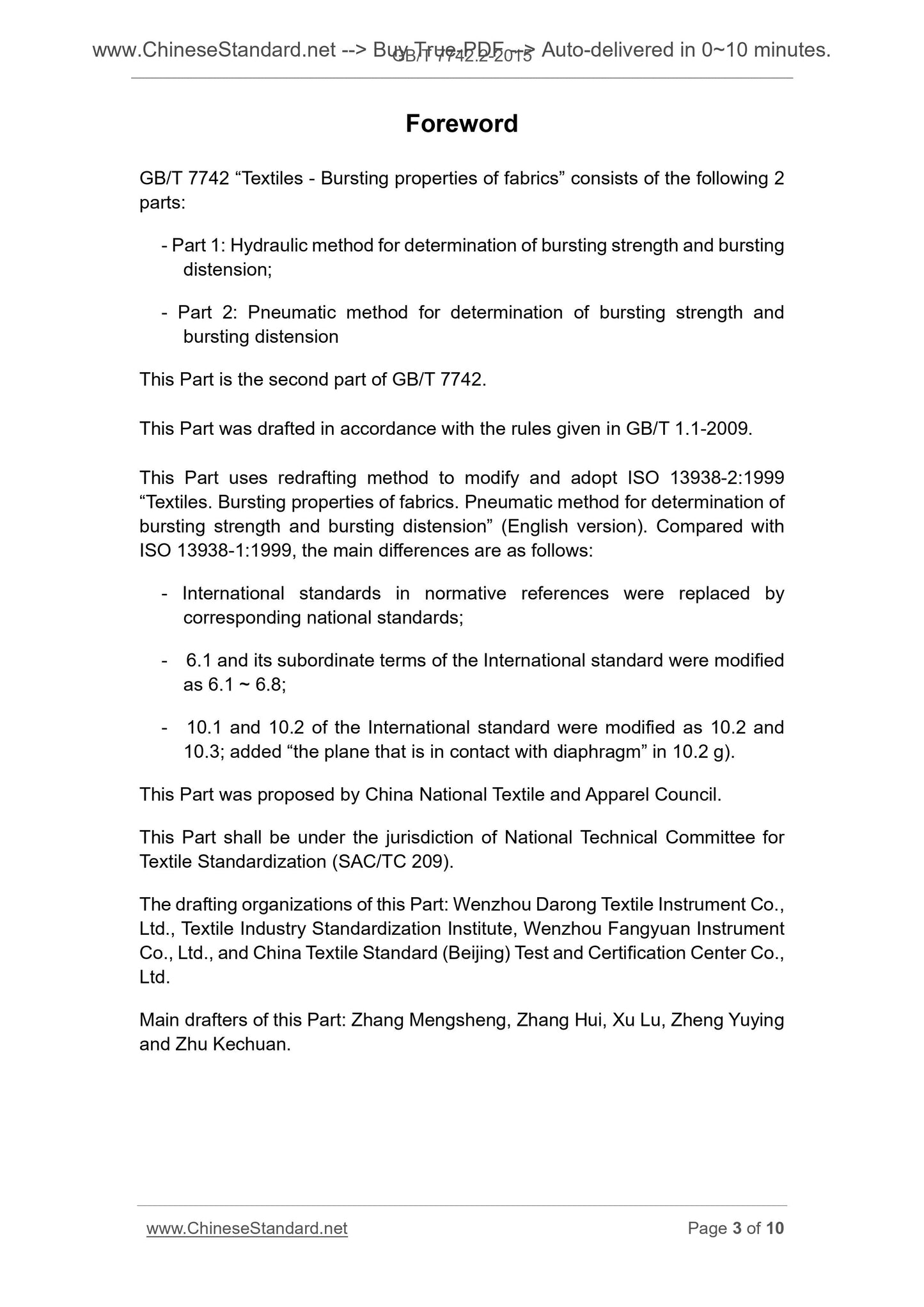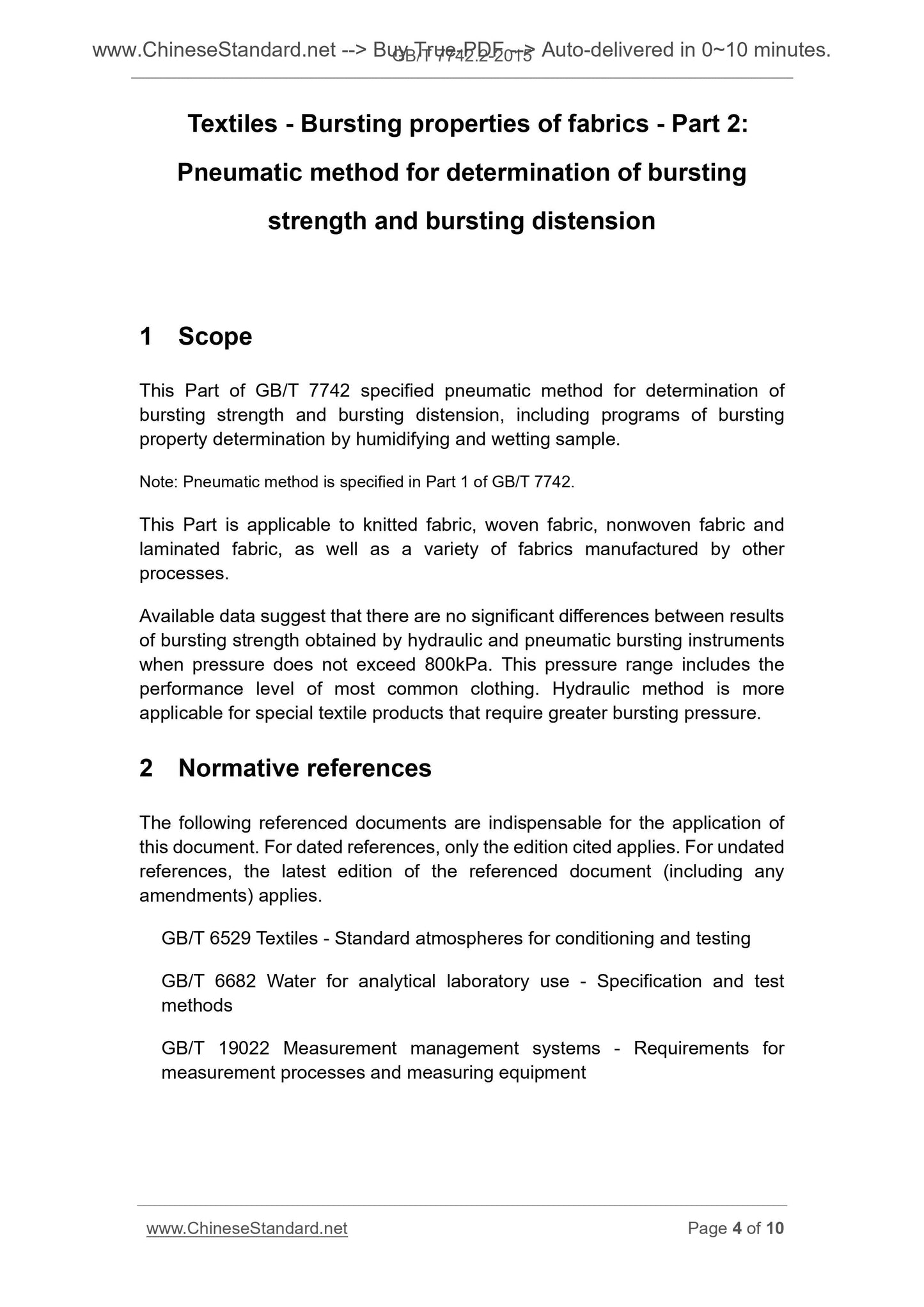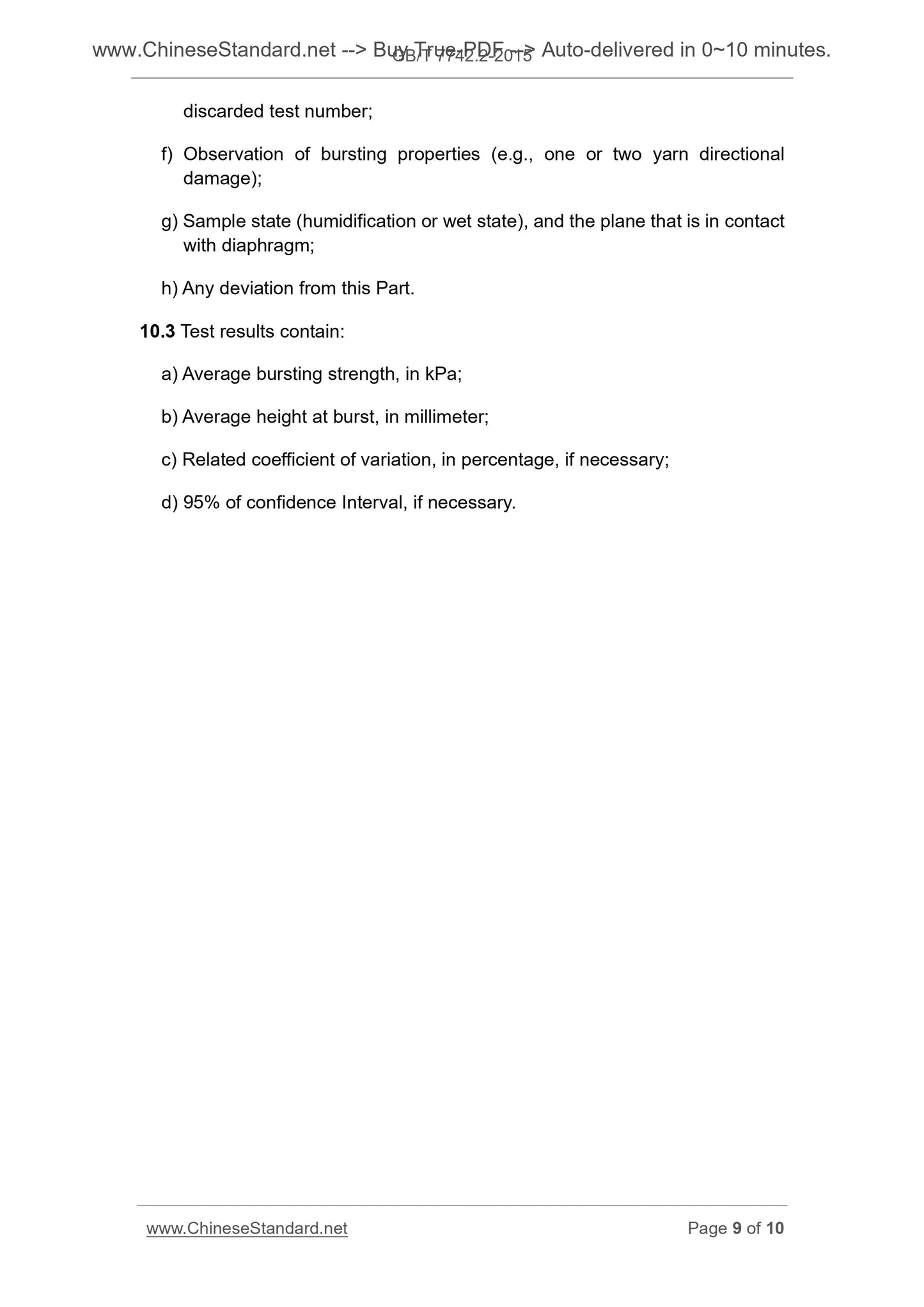1
/
of
6
www.ChineseStandard.us -- Field Test Asia Pte. Ltd.
GB/T 7742.2-2015 English PDF (GB/T7742.2-2015)
GB/T 7742.2-2015 English PDF (GB/T7742.2-2015)
Regular price
$85.00
Regular price
Sale price
$85.00
Unit price
/
per
Shipping calculated at checkout.
Couldn't load pickup availability
GB/T 7742.2-2015: Textiles -- Bursting properties of fabrics -- Part 2: Pneumatic method for determination of bursting strength and bursting distension
Delivery: 9 seconds. Download (and Email) true-PDF + Invoice.Get Quotation: Click GB/T 7742.2-2015 (Self-service in 1-minute)
Newer / historical versions: GB/T 7742.2-2015
Preview True-PDF
Scope
This Part of GB/T 7742 specified pneumatic method for determination ofbursting strength and bursting distension, including programs of bursting
property determination by humidifying and wetting sample.
Note. Pneumatic method is specified in Part 1 of GB/T 7742.
This Part is applicable to knitted fabric, woven fabric, nonwoven fabric and
laminated fabric, as well as a variety of fabrics manufactured by other
processes.
Available data suggest that there are no significant differences between results
of bursting strength obtained by hydraulic and pneumatic bursting instruments
when pressure does not exceed 800kPa. This pressure range includes the
performance level of most common clothing. Hydraulic method is more
applicable for special textile products that require greater bursting pressure.
Basic Data
| Standard ID | GB/T 7742.2-2015 (GB/T7742.2-2015) |
| Description (Translated English) | Textiles -- Bursting properties of fabrics -- Part 2: Pneumatic method for determination of bursting strength and bursting distension |
| Sector / Industry | National Standard (Recommended) |
| Classification of Chinese Standard | W04 |
| Classification of International Standard | 59.080.30 |
| Word Count Estimation | 8,838 |
| Date of Issue | 2015-09-11 |
| Date of Implementation | 2016-04-01 |
| Quoted Standard | GB/T 6529; GB/T 6682; GB/T 19022 |
| Adopted Standard | ISO 13938-2-1999, MOD |
| Regulation (derived from) | National Standard Announcement 2015 No.25 |
| Issuing agency(ies) | General Administration of Quality Supervision, Inspection and Quarantine of the People's Republic of China, Standardization Administration of the People's Republic of China |
| Summary | This Standard specifies the determination of fabric bursting strength and bursting distension pressure method, including measuring the humidity and wetting properties of both samples bursting program. This Standard applies to the fabric, woven fabric, nonwoven fabric and laminated fabric, but also for a variety of fabrics produced by other processes. Available data indicate that when the pressure does not exceed 800kPa, no significant difference in the use of hydraulic and pneumatic bursting strength results obtained by the two bursting instrument. This pressure range includes the most common level of performance clothing. High bursting pressure requirements for special textile, hydraulic method is more suitable. |
Share
